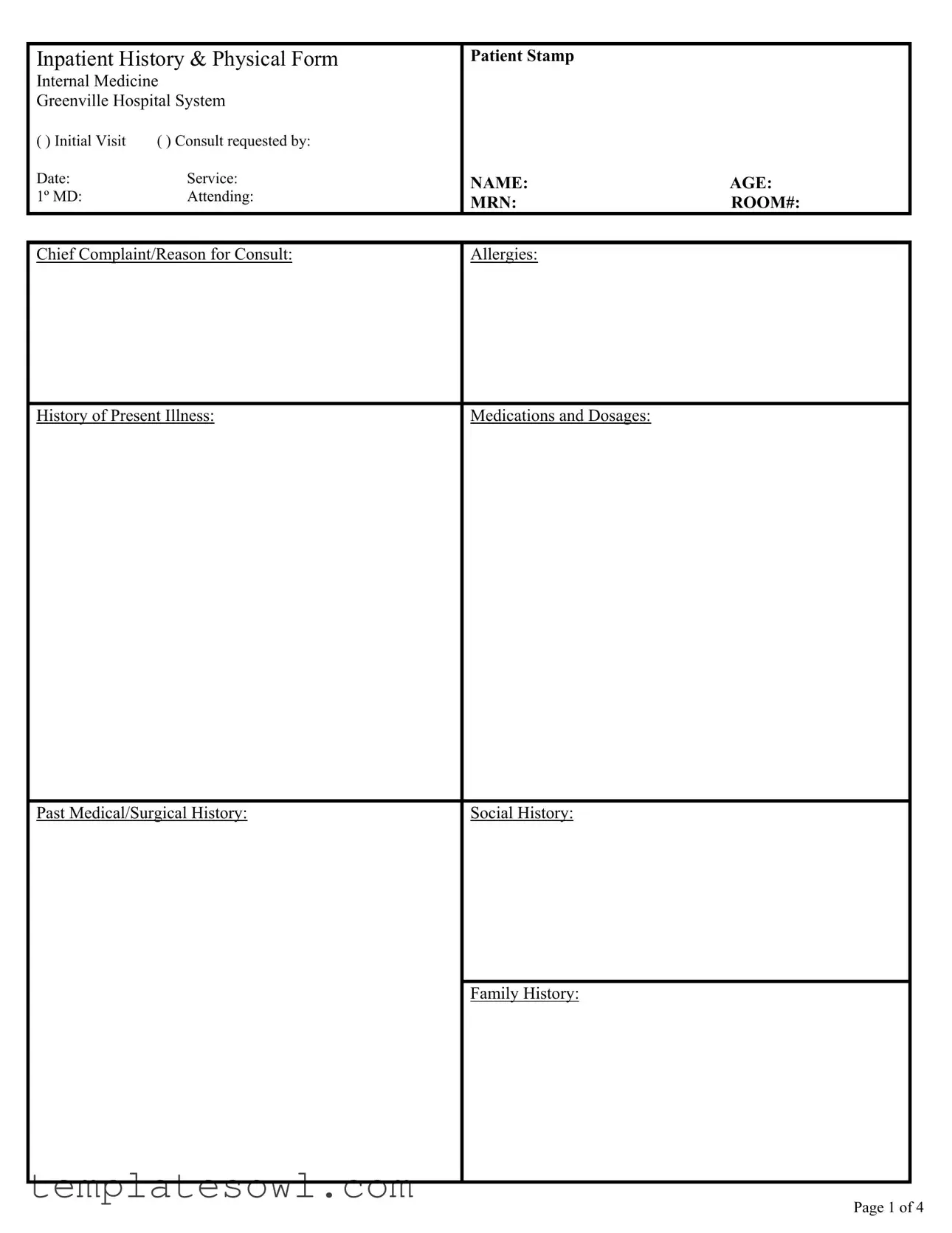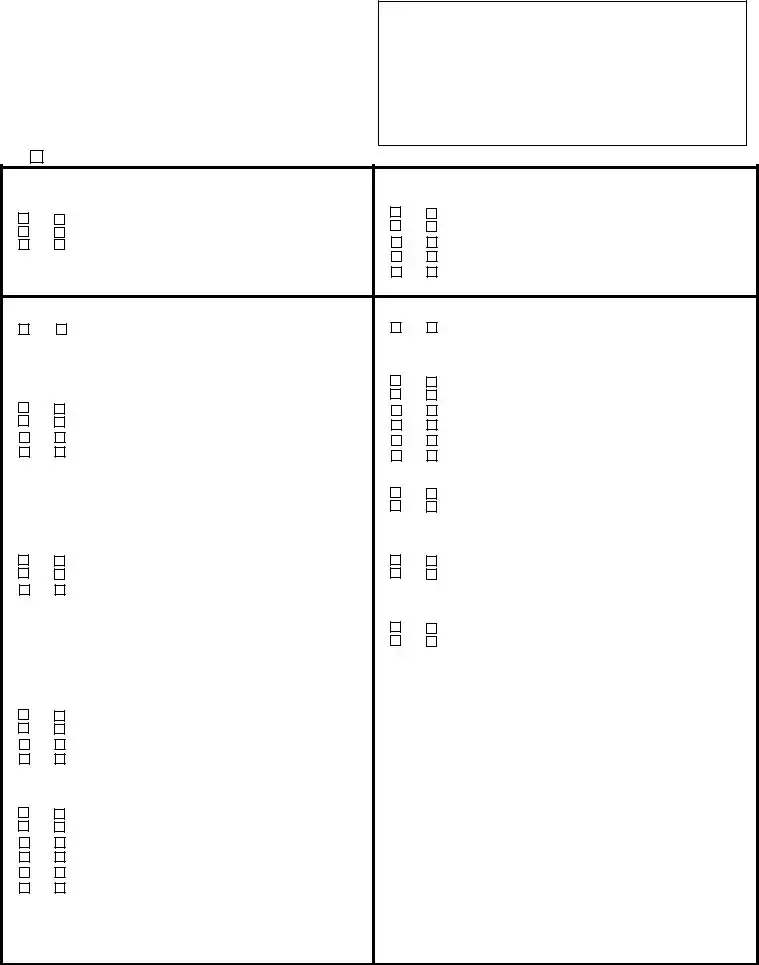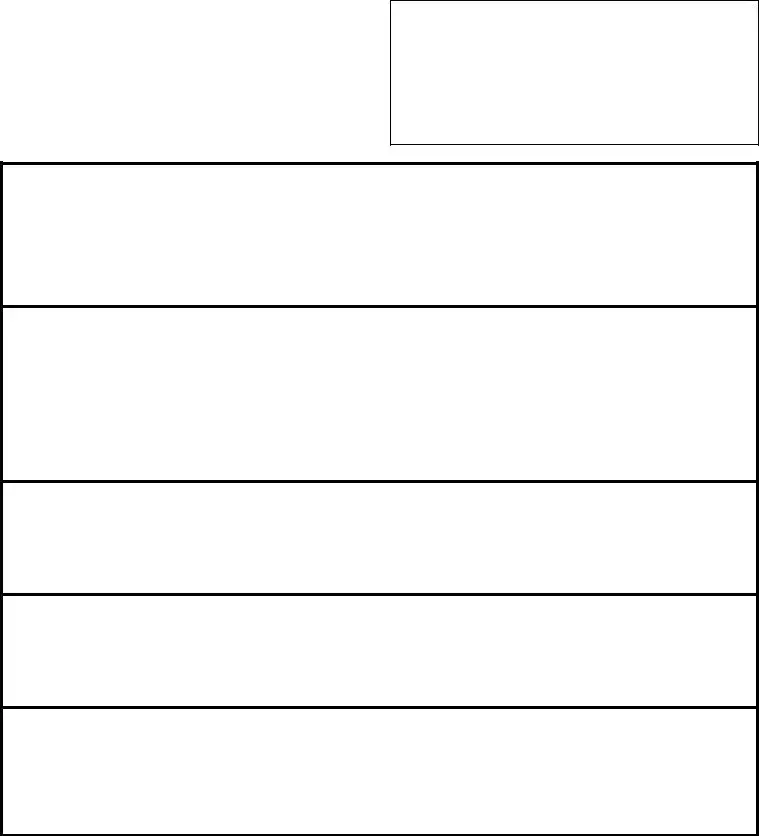The History and Physical form serves as a comprehensive document that provides medical professionals with essential information about a patient's medical history and current health status. This form collects a range of details, including the patient's chief complaint, medical history, social factors, and a physical examination. By aggregating this information, healthcare providers can make informed decisions regarding diagnoses, treatment plans, and ongoing care.
What sections are included in the H&P form?
The H&P form encompasses several key sections that cover various aspects of the patient's health. Initially, it captures identification information such as the patient's name, age, and medical record number (MRN). The document then details the chief complaint, allergies, medications, and both past medical and surgical histories. In addition, the form includes a comprehensive review of systems (ROS) and a physical examination section, which collectively offer a thorough overview of the patient's current health.
How is the Review of Systems (ROS) conducted?
The Review of Systems is a systematic inquiry where various body systems are evaluated for symptoms. Healthcare providers typically ask specific questions about common health issues related to each system, such as cardiovascular, respiratory, gastrointestinal, and neurological concerns. This section can either confirm the presence of symptoms or indicate that they are not present, helping to identify potential areas of concern for further investigation.
Why is the social and family history section important?
The social and family history is crucial in understanding factors that might influence a patient’s health. Social history may include lifestyle factors such as tobacco use, alcohol consumption, and exercise, while family history looks at genetic predispositions to certain conditions. These aspects can significantly affect the management of a patient's care and inform preventative measures.
What role does the assessment and plan section play?
The assessment and plan section summarizes the healthcare provider's evaluation of the patient's condition based on the history and physical examination findings. Here, the provider outlines a strategy for treatment, which may include further tests, referrals, or specific interventions. It is a critical component that guides the patient's ongoing care and outlines the next steps for their health management.
How often should the H&P form be updated?
The H&P form should be updated during significant changes in a patient's condition or upon admission to a new healthcare facility. For outpatients, it is generally updated at each visit, particularly for new complaints or changes in health status. Regular updates ensure that the care team has the most current and relevant information to support patient care effectively.




